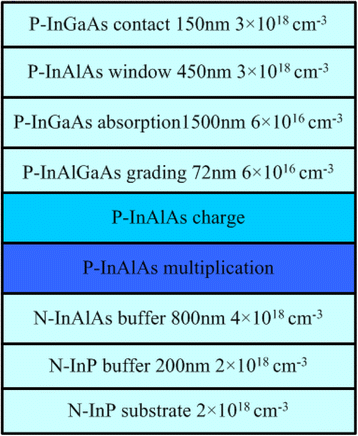-
-
October 4, 2024 at 9:02 pm
Sathursan
SubscriberHi there,
I am trying to replicate an InGaAs/InAlAs layer stack in Lumerical CHARGE based on this paper: https://link.springer.com/article/10.1186/s11671-016-1815-9#Tab1
When I tried running the electrical simulation for a 10um x 10um mesa with a voltage sweep (step size = 0.5V), my simulation converged (broke down) at V = 15.625 mV when the expected breakdown was at V = -25 V. I am not sure why this is happening as I set the min edge length to 0.1um. I have the following settings for the solver:
I enabled the following recombination models for InGaAs, InAlAs, InGaAlAs, and InP with the Hurkx model for trap-assisted recombination and band-to-band tunnelling. I can reach avalanche breakdown for a different InGaAs/InAlAs layer stack so I am unsure why I am not able to replicate avalanche breakdown based on the paper (The authors modelled their device in Silvaco).
-
October 4, 2024 at 9:04 pm
-
October 24, 2024 at 10:44 pm
Guilin Sun
Ansys EmployeeHi Sathursan, sorry to reply you late.
As long as you can simulate to 15.625 mV, it indicates that the settings are good. The reason to breakdown here is likely due to the sharp change of IV curve. eg, the gradient is too large to converge with voltage step size. Please this converged file at 15.625 mV as continuation file, and begin to simulate from here to some other voltage with smaller voltage step size. It may break again before reaching 25V. You will need to repeat this procedure with smaller step size until you reach 25V or close to it.
https://optics.ansys.com/hc/en-us/articles/360034918633-CHARGE-solver-Simulation-object
-
- You must be logged in to reply to this topic.



-
4618
-
1530
-
1386
-
1209
-
1021

© 2025 Copyright ANSYS, Inc. All rights reserved.












